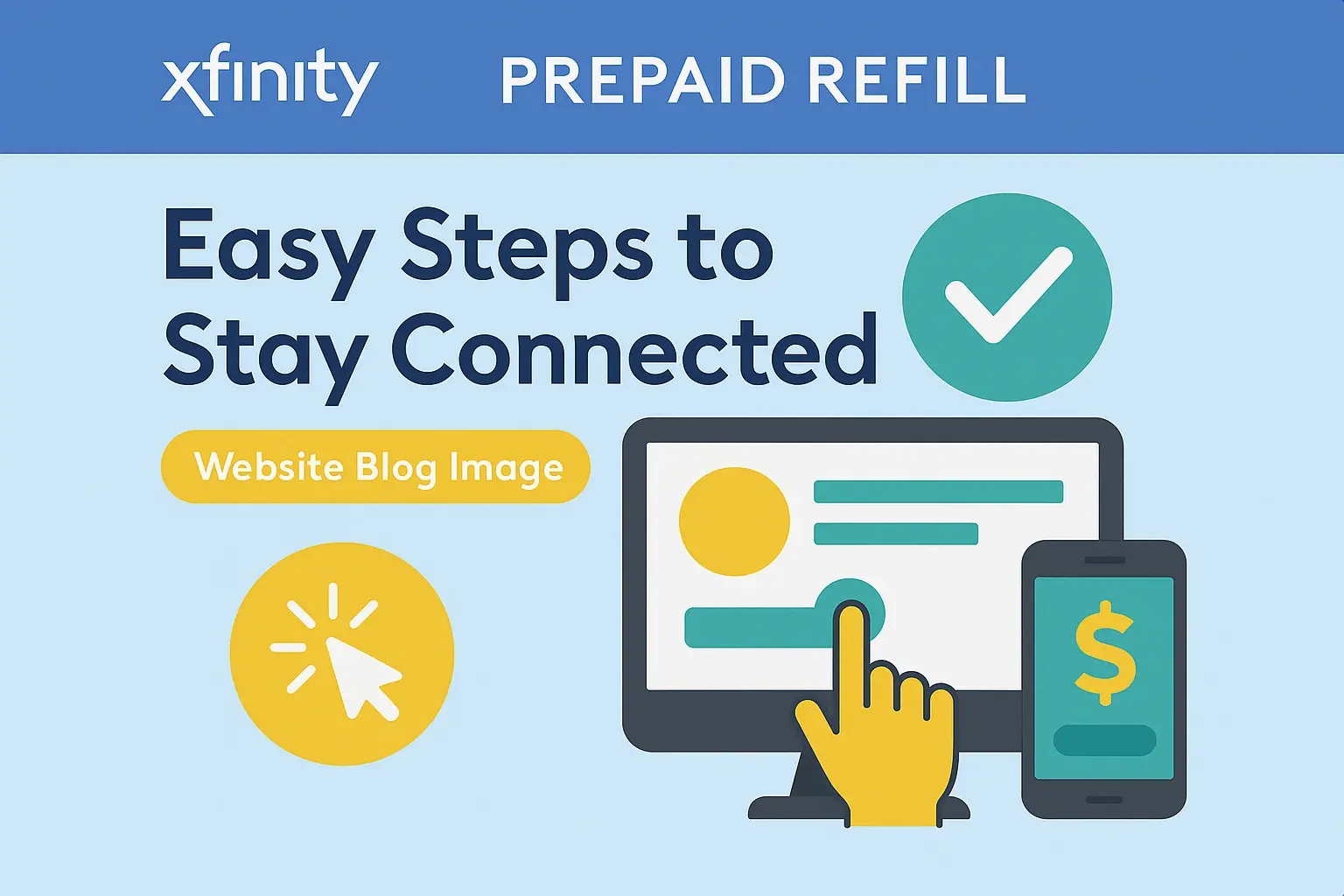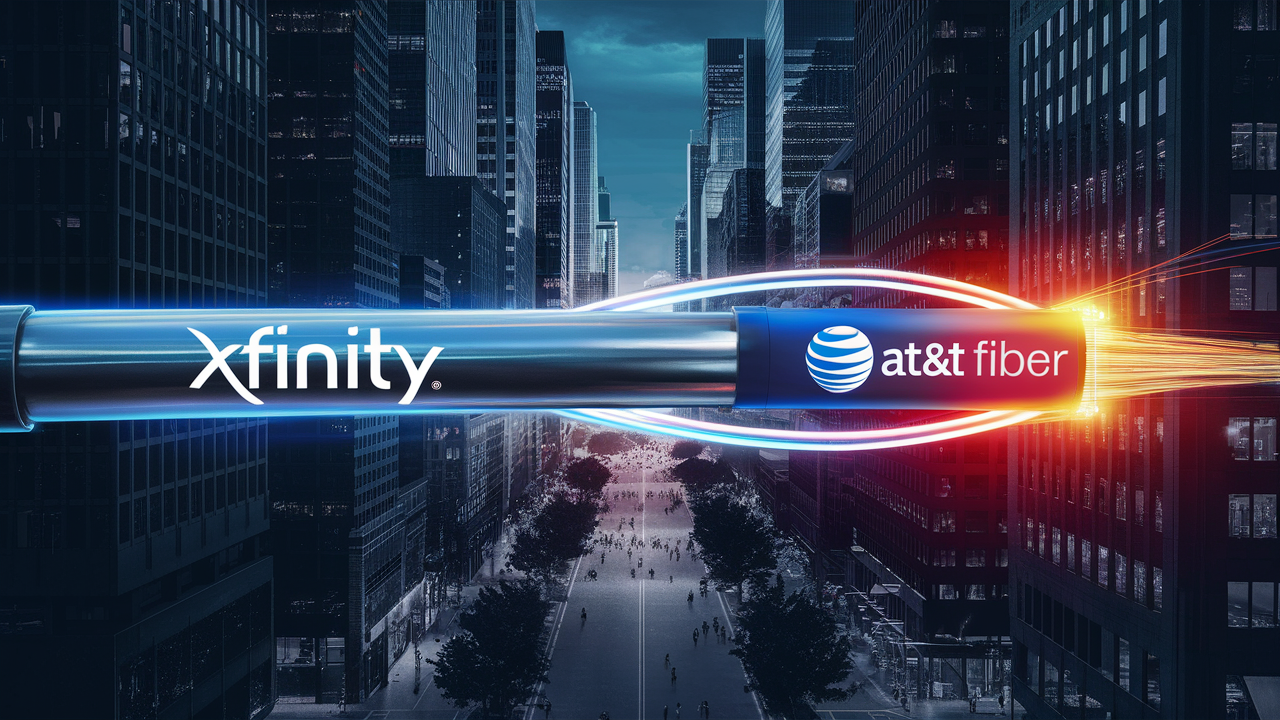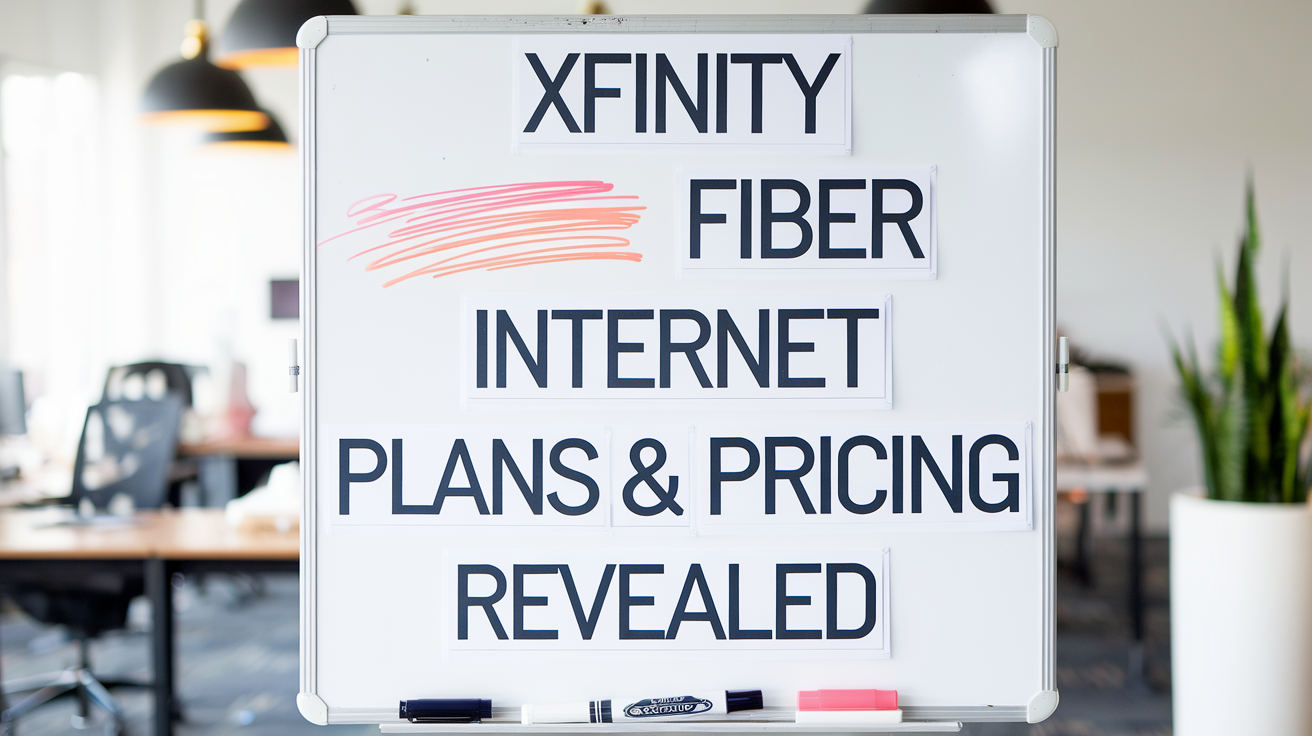Is Xfinity Mobile Gsm?

Introduction
In the rapidly evolving world of mobile connectivity, choosing the right carrier and ensuring device compatibility are critical for a seamless experience. Xfinity Mobile, a wireless service offered by Comcast, has gained popularity for its affordable plans and access to Verizon’s robust network. However, a common question among potential customers is whether Xfinity Mobile uses GSM (Global System for Mobile communications) or CDMA (Code Division Multiple Access) technology. This distinction is vital for determining whether your phone will work with Xfinity Mobile and how it performs on their network.
This comprehensive guide explores Xfinity Mobile’s network technology, clarifies the differences between GSM and CDMA, and provides practical advice for ensuring device compatibility. We’ll also cover Xfinity Mobile’s Bring Your Own Device (BYOD) program, discuss the implications of network technology for users, and address common questions in a detailed FAQ section. Whether you’re a current Xfinity customer or considering a switch, this guide will help you navigate the complexities of mobile network technologies.
Understanding GSM and CDMA
To answer whether Xfinity Mobile is GSM or CDMA, we first need to understand these technologies and their relevance in today’s mobile landscape.
What is GSM?
GSM, or Global System for Mobile communications, is a digital mobile network technology that uses narrowband Time Division Multiple Access (TDMA) to transmit voice and data. It is the most widely used mobile standard globally, particularly outside the United States. Key features of GSM include:
-
SIM Card Usage: GSM phones rely on a Subscriber Identity Module (SIM) card to store user information, making it easy to switch devices or carriers by swapping SIM cards.
-
Global Roaming: GSM’s prevalence in Europe, Asia, and other regions makes it ideal for international travel.
-
Carrier Flexibility: Users can switch carriers by inserting a new SIM card, provided the phone is unlocked.
Major U.S. carriers like AT&T and T-Mobile use GSM-based networks, which support a wide range of devices.
What is CDMA?
CDMA, or Code Division Multiple Access, is another digital mobile network technology that uses spread-spectrum techniques to transmit signals. It was primarily used in the United States by carriers like Verizon and Sprint. Key features of CDMA include:
-
Device-Specific Identity: Traditional CDMA phones did not use SIM cards; the user’s identity was tied to the device itself, making carrier switches more complex.
-
Limited International Roaming: CDMA is less common globally, which can restrict roaming options outside the U.S.
-
Carrier Locking: CDMA devices are often locked to a specific carrier, limiting flexibility.
The Shift to LTE and 5G
The distinction between GSM and CDMA is becoming less relevant with the advent of 4G LTE (Long-Term Evolution) and 5G technologies. These modern standards are not strictly tied to GSM or CDMA and are designed to work with a broader range of devices. However, device compatibility still depends on whether a phone supports the specific frequency bands used by a carrier’s network.
|
Technology |
Key Features |
Major U.S. Carriers |
International Roaming |
|---|---|---|---|
|
GSM |
SIM card, global standard, easy carrier switching |
AT&T, T-Mobile |
Excellent |
|
CDMA |
Device-specific, limited global use, carrier-locked |
Verizon, Sprint |
Limited |
|
LTE/5G |
Universal compatibility, high speeds, SIM or eSIM |
All major carriers |
Varies by carrier |
Xfinity Mobile’s Network
Xfinity Mobile operates as a Mobile Virtual Network Operator (MVNO), meaning it does not own its own cellular towers but instead partners with Verizon to provide wireless service. This partnership has significant implications for its network technology and device compatibility.
Verizon’s Network: A CDMA Foundation
-
Historical Context: Verizon’s network was historically CDMA-based, using Code Division Multiple Access for its 2G and 3G networks. This made Verizon’s phones distinct from those used by GSM carriers like AT&T.
-
Current Technology: Verizon has largely phased out its 3G CDMA network, with a complete shutdown by the end of 2022. Today, Verizon’s network primarily relies on 4G LTE and 5G technologies, which are compatible with both GSM and CDMA devices, provided they support the necessary frequency bands.
-
Coverage: Verizon’s network is known for its extensive coverage, particularly in rural areas, and is one of the most reliable in the U.S., according to sources like YourNavi.
Xfinity Mobile’s Use of Verizon’s Network
-
Primary Technology: Xfinity Mobile uses Verizon’s CDMA-based network infrastructure for its cellular service. This means that, at its core, Xfinity Mobile is a CDMA network.
-
Wi-Fi Hotspots: In addition to Verizon’s cellular network, Xfinity Mobile leverages Comcast’s extensive network of Wi-Fi hotspots. These hotspots allow Xfinity Mobile customers to offload data traffic, enhancing performance in areas with high Wi-Fi availability.
-
LTE and 5G Support: Xfinity Mobile supports Verizon’s 4G LTE and 5G networks, which are not strictly CDMA or GSM. This allows Xfinity Mobile to support a broader range of devices, including many GSM phones.
Does Xfinity Mobile Support GSM Devices?
Yes, Xfinity Mobile can support certain GSM devices, but compatibility is not universal:
-
Modern Devices: Many modern smartphones, such as iPhones and newer Samsung Galaxy models, are designed to support both GSM and CDMA networks. These devices can work on Xfinity Mobile if they support Verizon’s LTE bands (e.g., Bands 2, 4, 5, 13, 66).
-
Older GSM Devices: Older GSM phones, such as those designed exclusively for AT&T or T-Mobile, may not support Verizon’s LTE bands and are likely incompatible with Xfinity Mobile.
-
BYOD Program: Xfinity Mobile’s Bring Your Own Device (BYOD) program allows customers to use their existing phones, but only if they are compatible with Verizon’s network. You can check compatibility at Xfinity’s BYOD page.
Limitations and Considerations
-
CDMA Phase-Out: Verizon’s phase-out of its 3G CDMA network means that older CDMA-only devices may not work reliably on Xfinity Mobile. Users with such devices are encouraged to upgrade to LTE or 5G-compatible phones.
-
GSM Compatibility: While some GSM devices work on Xfinity Mobile, not all do. For example, a Reddit user noted that an international Samsung A22 with only GSM support was incompatible with Xfinity Mobile (Reddit).
-
Device Locking: Phones purchased from Xfinity Mobile are often locked to their network, but unlocked devices from other carriers can be used if compatible.
Device Compatibility with Xfinity Mobile
Choosing the right device is crucial for a seamless experience with Xfinity Mobile. Here’s a detailed look at device compatibility:
Compatible Devices
-
Xfinity Mobile-Approved Devices: Xfinity Mobile sells a range of devices guaranteed to work on their network, including:
-
iPhones: Models from the iPhone 5 onwards, such as the iPhone 12, 13, 14, and newer, are compatible due to their support for Verizon’s LTE bands.
-
Samsung Galaxy: Models like the Galaxy S21, S22, and newer are typically compatible.
-
Google Pixel: Some Pixel models, such as the Pixel 4, 5, and 6, are supported, but compatibility varies by model.
-
-
BYOD Devices: Xfinity Mobile’s BYOD program allows users to bring their own phones, provided they meet Verizon’s network requirements. Common compatible devices include iPhones, Samsung Galaxy phones, and select Google Pixel models.
How to Check Compatibility
To ensure your device works with Xfinity Mobile:
-
Use the BYOD Tool: Visit Xfinity’s BYOD page and enter your device’s IMEI number to check compatibility.
-
Contact Customer Support: If the online tool is inconclusive, call Xfinity Mobile’s customer support at 1-888-936-4968 for assistance.
-
Verify LTE Bands: Ensure your device supports Verizon’s primary LTE bands (2, 4, 5, 13, 66) and 5G bands (e.g., n2, n5, n66).
Examples of Incompatible Devices
-
Older GSM Phones: Devices like the Samsung A33 5G (international version) that only support GSM bands may not work, as noted in an Amazon Q&A (Amazon).
-
Non-Verizon Devices: Phones designed exclusively for AT&T or T-Mobile may lack the necessary bands for Verizon’s network.
|
Device Type |
Compatibility |
Notes |
|---|---|---|
|
iPhone (5 and newer) |
Compatible |
Supports Verizon’s LTE bands |
|
Samsung Galaxy (S21 and newer) |
Compatible |
Must support Verizon’s bands |
|
Google Pixel (select models) |
Compatible |
Check specific model compatibility |
|
Older GSM-only phones |
Likely incompatible |
May lack Verizon’s LTE bands |
|
Older CDMA-only phones |
Limited compatibility |
Affected by 3G CDMA phase-out |
Xfinity Mobile’s BYOD Program
Xfinity Mobile’s BYOD program is a key feature for customers who want to use their existing phones. Here’s how it works:
Steps to Join BYOD
-
Check Compatibility: Use Xfinity Mobile’s online BYOD tool to verify if your device is compatible by entering its IMEI number.
-
Purchase a SIM Card: If your device requires a physical SIM card, order one from Xfinity Mobile. Many modern devices also support eSIM, which Xfinity Mobile supports (Really.com).
-
Activate Your Device: Follow Xfinity Mobile’s activation process, which involves inserting the SIM card or activating the eSIM and setting up your account.
Benefits of BYOD
-
Cost Savings: Avoid the cost of purchasing a new phone by using your existing device.
-
Flexibility: Choose from a wider range of devices, as long as they are compatible.
-
No Contract: Xfinity Mobile’s plans are contract-free, offering flexibility to switch or cancel.
Limitations
-
Strict Compatibility Requirements: Xfinity Mobile is stricter than Verizon about which devices are supported, even if they work on Verizon’s network (Reddit).
-
No Guarantee for Unsupported Devices: Attempting to use an unsupported device (e.g., via an unsolicited SIM swap) may result in unreliable service.
Xfinity Mobile’s Plans and Features
Xfinity Mobile offers two main plans, both of which leverage Verizon’s network and Comcast’s Wi-Fi hotspots:
-
Unlimited Plan: Priced at approximately $45 per month, this plan offers unlimited talk, text, and data with a soft cap of 20GB before potential speed throttling (BGR).
-
By-the-Gig Plan: Charges $12 per GB of data, ideal for light users.
Additional features include:
-
Wi-Fi Hotspots: Access to millions of Xfinity Wi-Fi hotspots for data offloading.
-
International Roaming: Available in select countries, with rates varying by destination (e.g., 10 cents per minute/text/MB in Italy) (Michael Saves).
-
eSIM Support: Allows for easy activation on compatible devices.
Implications for Users
Understanding Xfinity Mobile’s network technology has several implications:
-
Device Choice: Ensure your phone supports Verizon’s LTE and 5G bands to avoid connectivity issues.
-
International Travel: While Xfinity Mobile offers international roaming, GSM phones may have better compatibility abroad due to global GSM prevalence.
-
Network Reliability: Verizon’s network provides excellent coverage, but performance may vary in areas with limited Wi-Fi hotspots.
Conclusion
Xfinity Mobile primarily operates on Verizon’s CDMA-based network but supports many modern GSM devices that are compatible with Verizon’s 4G LTE and 5G networks. The distinction between GSM and CDMA is becoming less critical as mobile networks transition to LTE and 5G, but device compatibility remains a key consideration. By using Xfinity Mobile’s BYOD tool and understanding your device’s capabilities, you can ensure a smooth experience with their service. With access to Verizon’s reliable network and Comcast’s Wi-Fi hotspots
Faq
Is Xfinity Mobile GSM or CDMA?
Xfinity Mobile primarily uses Verizon’s CDMA-based network but supports compatible GSM devices that work on Verizon’s 4G LTE and 5G networks.
Can I use a GSM phone with Xfinity Mobile?
Yes, if the GSM phone supports Verizon’s LTE bands. Check compatibility using Xfinity Mobile’s BYOD tool at Xfinity’s BYOD page.
What happens if my phone is not compatible with Xfinity Mobile?
Incompatible phones won’t work on Xfinity Mobile’s network. You’ll need to purchase a compatible device or choose another carrier.
Does Xfinity Mobile support eSIM?
Yes, Xfinity Mobile supports eSIM for compatible devices, simplifying activation and carrier switching.
Can I use Xfinity Mobile internationally?
Yes, Xfinity Mobile offers international roaming in select countries, but costs vary (e.g., 10 cents per minute/text/MB in some regions). Check details with Xfinity Mobile.





